No Ordinary Duck: Meet the Northern Shoveler
Updated: Jan. 04, 2024
This duck species is easy to identify once you spot its heavy bill. Northern shoveler ducks are dabblers, filter-feeding on the surface.
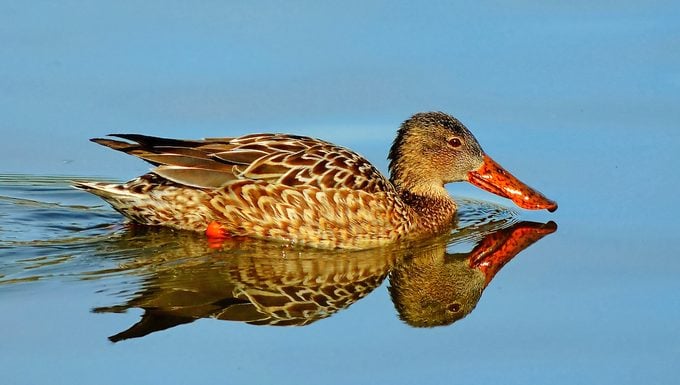
The past few winters, some new visitors have begun showing up on our backyard lake. A casual observer might have seen the green head and just dismissed it as another mallard, but at second glance, it was easy to see this was no ordinary duck. The large heavy bill made it extremely easy to identify our new winter residents—they’re northern shovelers (Anas clypeata).
On This Page
Northern Shoveler Range
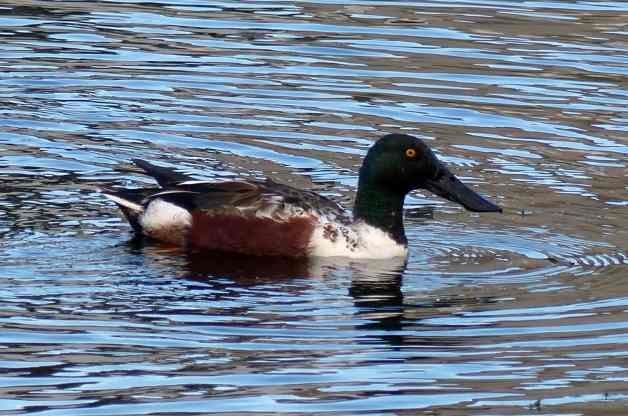
Northern shovelers are actually pretty common birds, and can be found across much of the United States and Canada at some point during the year. They winter down south, then migrate to the northwest for breeding season. They’re not restricted to North America, though; this species is also found in Europe, Africa and Asia.
Look for them in their preferred habitat of muddy creeks and marshes.
Learn how to identify a wood duck.
Northern Shoveler Identification
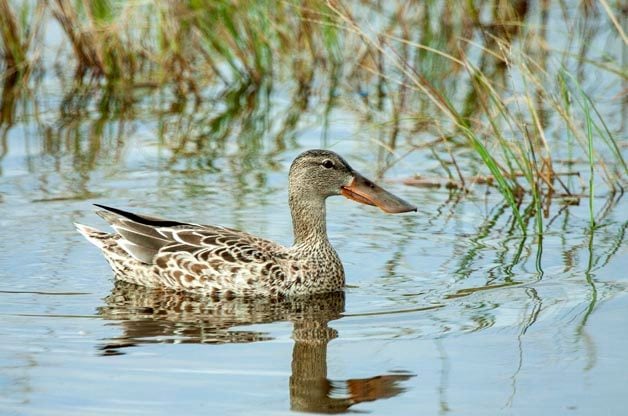
The specialized long, shovel-shaped bill sets the northern shoveler apart from other ducks. The bill is twice as wide at the tip as at its base.
Males have a green head, white chest and a brown side patch. Females are mottled brown and overall drabber in color than the males—though they still have that distinctive bill.
Find out what a black-bellied whistling duck looks like.
Diet and Feeding Habits
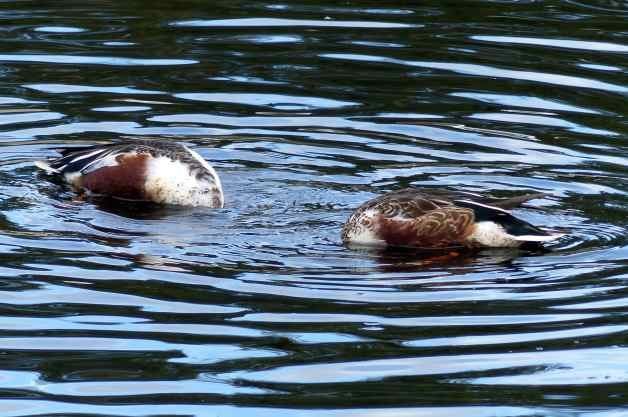
Shovelers are dabbling ducks, which means they don’t completely submerge underwater for feeding. Because their bills are so long and heavy, they don’t even need to tip their body down into the water.
As their name implies, the bird lowers its bill and uses it like a shovel to collect mud and water from which it strains out food. Its diet includes snails, water insects, seeds, and such small aquatic plants as duckweed. They have more than 100 small projections, called lamellae, along the edge of the bill to help with this process.
What foods can you feed to ducks?
Nesting Habits
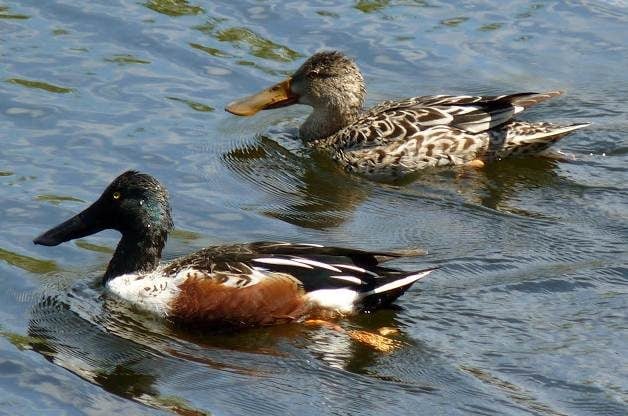
These ducks are monogamous. Shovelers usually nest close to water, in a plant-lined depression. The female lays from 8 to 12 eggs at the rate of an egg a day. As the laying goes on, she plucks down from her body and adds it to the nest. She does not start incubating until the last egg is laid.
What is that black duck with the white beak?
Northern Shoveler Sound
Bird songs courtesy of the Cornell Lab of Ornithology.




















